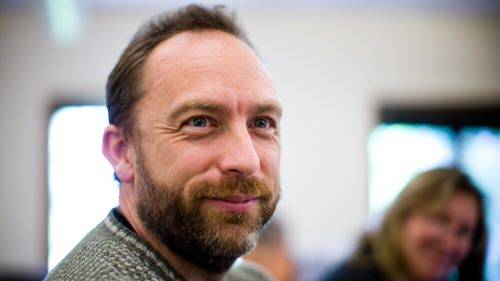
Forty is generally the age at which people are jokingly derided as “over the hill.” In youthful Silicon Valley, however, irrelevance comes much sooner. Citing youthful entrepreneurs like Mark Zuckerberg, tech entrepreneurs tend to think of themselves as past their prime if they aren’t worth a billion dollars by the age of 35, or even 25. But according to Wikipedia founder Jimmy Wales and other successful tech entrepreneurs, this thinking is as wrong as it is dangerous.
And Jimmy Wales should know.
Silicon Valley’s Age Bias
According to data from Payscale reported by Quentin Hardy, the median age of tech workers is young indeed. While the U.S. Bureau of Labor statistics show an overall median age of 42.3 for American workers, tech workers skew much, much younger. Only six of the tech companies reviewed by Payscale had a median age (equal number of people above and below a number) above 35.
And only one—HP—came in above 40.
The youngest companies in the Payscale data—Epic Games (26); Facebook (28); Zynga (28); Google (29); and AOL, Blizzard Entertainment, InfoSys, and Monster.com (all 30)—are also some of the industry’s most successful. As Hardy points out, only shoe stores and restaurants have workers with a median age less than 30. I suspect most people would prefer the upside of Facebook to Foot Locker.
This bias toward youth often translates into an ageism that is often understood but not overtly spoken. Except by Facebook CEO Mark Zuckerberg, who noted at a Y Combinator event: “I want to stress the importance of being young and technical. Young people are just smarter. Why are most chess masters under 30?”
Smarter. Willing to work for pizza and the promise of untold riches. That’s the myth of the youth movement in Silicon Valley.
If only it were true.
Entrepreneurship’s Dirty Secret: It’s An Old Person’s Game
One of the blessings and curses of youth is that you have no clue what’s actually reasonable. Youth can therefore deliver real innovation because a young entrepreneur may not appreciate just how difficult it is to develop a new technology or start a new company. And so she plows ahead, succeeds and hires more people like her.
Sometimes it works that way. But as Duke professor and Stanford fellow Vivek Wadhwa opines, “It is the role of the old to implement [ideas that a young entrepreneur may hatch]. After all, great ideas by themselves don’t lead to breakthrough technologies or successful companies. Ideas are a dime a dozen.” Lest we think this is just one old codger justifying his old age from a university desk, it’s useful to hear what successful tech entrepreneurs think.
Like Jimmy Wales.
Asked what people in Silicon Valley should do once they’re 35 and officially “over the hill,” Wales responded:
I turned 35 the year I founded Wikipedia. 38 the year I founded Wikia (now ranked #30, quantcast).
The premise of the question is wrong. A better question might be: How can we in the tech community make sure that unusual success at a very early age is not mistakenly thought to be the norm?
“Unusual”? “Mistakenly”? Well, yes.
According to data compiled by Wadhwa, the average age of a successful entrepreneur in high-growth industries such as computers, health care, and aerospace is 40. Twice as many successful entrepreneurs are over 50 as under 25. A whopping 75% have more than six years of industry experience and 50% have more than 10 years when they create their startup.
And according to data from the Kauffman Foundation, the highest rate of entrepreneurship in America has shifted to the 55–64 age group, with people over 55 almost twice as likely to found successful companies than those between 20 and 34. Indeed, Kauffman highlights that the 20-34 age bracket has the lowest rate of entrepreneurial activity.
Hardly a youthquake.
Life Begins At 40
Indeed, one of the benefits of age is that you actually have lived long enough to appreciate serious problems, and have an idea of how to fix them. Some of what Silicon Valley’s youthful entrepreneurs create tends to be somewhat silly, solving problems that only a 20-something person with no kids or other encumbrances could have. (“How DO I get that beer bong delivered in minutes, not days???”).
For every Zuckerberg at Facebook, there are dozens of old codgers starting other companies. Like Mark Pincus, 41 when he started Zynga. Or Reid Hoffman, who was 36 when he founded LinkedIn. Or… the list goes on: Marc Benioff (35), Salesforce; Robert Noyce (41), Intel; Robin Chase (42), Zipcar; Irwin Jacobs (52) and Andrew Viterbi (50), Qualcomm; Craig Newmark (42), Craigslist; etc.
Or even Michael Arrington, who famously argued that entrepreneurs peak at 25, didn’t start Techcrunch until he was 35.
So youth can be good, and it can be bad. But it’s not a prerequisite. More often than not, age offers the best foundation for success.
Which is why Mike Olson, co-founder and chief strategy officer of Cloudera, argues that the young should wait to get old:
You play for high stakes when you decide to start your own business. Whenever you can, you should cheat to turn the game your way… Grow up more slowly. Stay in school, show up at class, take the full book of final exams. Hang out late at night in the lab with the rest of the crew. Then, go get a job for a regular company. Watch and learn….
All of us in Silicon Valley—business people, investors, reporters, but especially impatient young entrepreneurs—fetishize start-ups today. We obsess about technology and products. We tell the Steve Jobs story, the Mark Zuckerberg story, the Bill Gates story, over and over again. We forget about Tim Cook and Sheryl Sandberg and Paul Allen. We look at success and see only the short half of the picture.
We forget how important it is to grow up.
Not that age is not without its problems, as Netflix CEO Reed Hastings points out: “[I] started Netflix DVD rental when I was 37… and first streaming when I was 47… so maybe not too bad after 35 except that all-nighters are definitely harder.”










